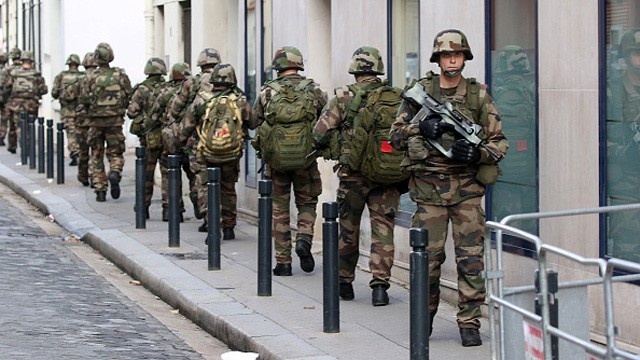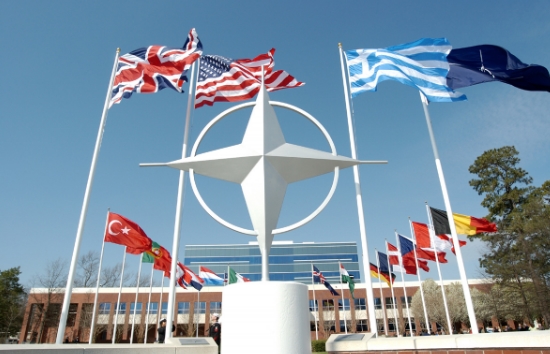South Korea preparing to swiftly eliminate Kim Jong Un and other top Pyongyang officials in the event of an all-out war
03/18/2024 / By Richard Brown

South Korean Minister of National Defense Shin Won-sik has called for preparations to quickly eliminate North Korean Supreme Leader Kim Jong Un and other top officials in Pyongyang in the event of an outbreak of a major conflict in the Korean Peninsula.
Shin made this statement during a visit to the headquarters of South Korea’s Army Special Warfare Command, the main special operations forces command center for the Republic of Korea Army, in Icheon, over 30 miles southeast of Seoul. In his statement, he emphasized the need for swift action against enemy leadership to prevent a lengthy and costly conflict.
Shin personally asked the special forces command to be ready to strike at enemy leadership if they initiate hostilities, highlighting the important role the special forces unit has in South Korea’s defense doctrine, which aims to deliver a devastating retaliatory strike in response to a North Korean attack. (Related: Kim Jong Un: U.S., Japan and South Korea may team up to LAUNCH NUKES against North Korea this year.)
Shin has previously warned of severe consequences if North Korea engages in actions detrimental to peace, signaling South Korea’s determination to respond decisively to any threats to security.
U.S. and SoKor proceed with massive military drills to boost readiness amid heightened tensions
Shin’s visit to Incheon took place amid ongoing joint military exercises between South Korea and the United States, known as “Freedom Shield,” which is officially meant to boost military readiness, but Pyongyang views as a provocation and a rehearsal for an invasion of the north.
The Freedom Shield exercises last for 11 days and aim to enhance Seoul and Washington’s readiness against North Korean nuclear threats amid an escalating series of missile tests, retaliatory military exercises and aggressive rhetoric from North Korea.
The latest drills have also focused on preparing special forces for missions such as “infiltrating key command facilities and paralyzing their operations.” The Army Special Warfare Command has also confirmed in a statement that it is preparing for “various provocations” from the North, including terrorist attacks.
“We will move in, strongly suppress them, and punish them until the end,” said the command.
“Through this exercise, [we] must mater operational systems that neutralize the North’s nuclear and missile network early on and attack the enemy in all areas – including land, sea, air, space, cyber and electromagnetic waves,” said Shin in a statement. “[We] must also strengthen operational capabilities to the next level to overwhelm the enemy in all domains.”
In response to these exercises, North Korea, which views them as a precursor to invasion, has not issued an immediate response. Historically, the North has reacted to such drills with provocative weapons tests.
South Korea’s military disclosed that it also plans to expand the number of field exercises it conducts with U.S. forces this spring up to 48, doubling the number conducted from the previous year. These exercises will encompass live-firing, bombing, air assault, and missile interception drills.
Since the beginning of 2022, North Korea has conducted over 100 rounds of missile tests to modernize its weaponry, amid stalled peace and normalization talks with the U.S. and South Korea. In response, Seoul and Washington have expanded their training activities and bolstered their military presence with deployments of aircraft carriers and long-range nuclear-capable bombers.
This year alone, North Korea has already conducted six rounds of missile tests and numerous artillery firing drills. Additionally, Kim announced a departure from the country’s longstanding official policy of working toward peaceful unification with South Korea. Pyongyang has also opted for a more aggressive military stance along the disputed sea boundaries between the two nations.
Kim has also issued threats of annihilation against South Korea and the U.S., a departure from his previous rhetoric.
While North Korea’s actions have raised concerns about potential provocations along the tense sea and land borders, experts suggest that the likelihood of a full-scale attack remains low, given the significant military advantage held by U.S. and South Korean forces.
The recent escalation by North Korea is believed to be linked to the upcoming elections in the U.S. and South Korea.
North Korea sees the advancement of its nuclear arsenal as a strategic leverage in future diplomatic negotiations, aiming to secure concessions such as the easing of international sanctions.
Watch this video of vloggers and social media personalities Julia Chernogorova and her husband Matt as they provide a rare and surreal glimpse into life inside North Korea.
This video is from the Pool Pharmacy channel on Brighteon.com.
More related stories:
North Korea’s Kim Jong Un deems South Korea Pyongyang’s ENEMY NO. 1.
North Korea fires 200 rounds of artillery shells toward South Korea’s Yeonpyeong Island.
Sources include:
Submit a correction >>
Tagged Under:
chaos, Korean War, military, military drills, military exercises, military readiness, military strategy, national security, North Korea, nuclear war, Shin Won-sik, South Korea, United States, WWIII
This article may contain statements that reflect the opinion of the author
RECENT NEWS & ARTICLES
COPYRIGHT © 2018 SELFDEFENSE.NEWS
All content posted on this site is protected under Free Speech. SelfDefense.news is not responsible for content written by contributing authors. The information on this site is provided for educational and entertainment purposes only. It is not intended as a substitute for professional advice of any kind. SelfDefense.news assumes no responsibility for the use or misuse of this material. All trademarks, registered trademarks and service marks mentioned on this site are the property of their respective owners.





















